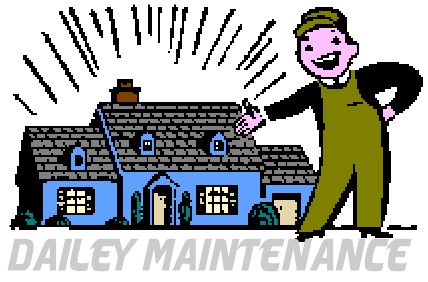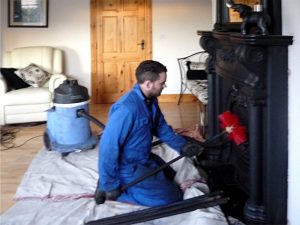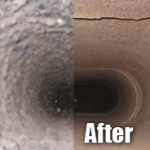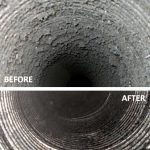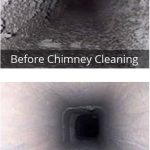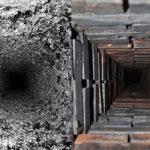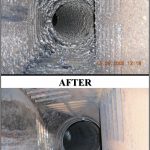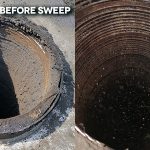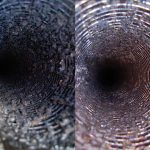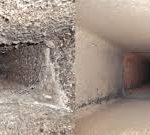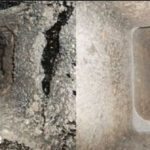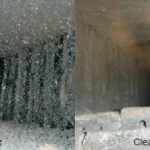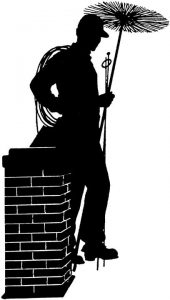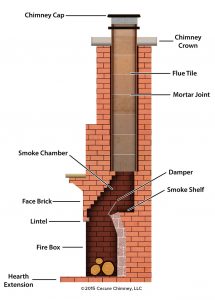
A fireplace should be cleaned any time an appreciable accumulation (1/8 inch or more) of soot and creosote occur.
It can be enough to fuel a chimney fire that may damage the chimney and even spread to the roof and home! Furnace flue systems also require cleaning, so do not neglect regular cleaning of those venting systems.
Why should I clean / sweep my chimney?
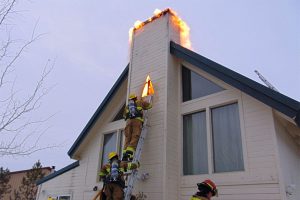
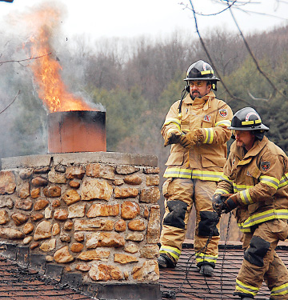
Some fireplace use can produce an incredible amount of soot and creosote during a cleaning. We have been known to have removed nearly two full five gallon buckets of material from one chimney! Removing this material is critical to continued safe use of the fireplace and reduced risk of Chimney Fires that start when this highly combustible material builds up to unsafe levels.
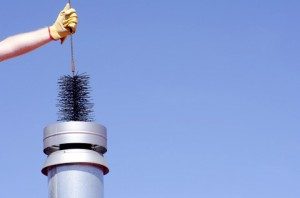 How often should the chimney be swept?
How often should the chimney be swept?
This a tougher question than it sounds. The simple answer is: The National Fire Protection Association Standard 211 says, “Chimneys, fireplaces, and vents shall be inspected at least once a year for soundness, freedom from deposits, and correct clearances. Cleaning, maintenance, and repairs shall be done if necessary.” This is the national safety standard and is the correct way to approach the problem. It takes into account the fact that even if you don’t use your chimney much, animals may build nests in the flue or there may be other types of deterioration that could make the chimney unsafe to use.
The Chimney Safety Institute of America recommends that open masonry fireplaces should be swept at 1/8″ of sooty buildup, and sooner if there is any glaze present in the system. This is considered to be enough fuel buildup to cause a chimney fire capable of damaging the chimney or spreading to the home. Factory-built fireplaces should be swept when any appreciable buildup occurs. The logic is that the deposit is quite acidic and can shorten the life of the fireplace.
My fireplace stinks – what can be done?
The smell is due to creosote deposits in the chimney, a natural byproduct of woodburning. The odor is usually worse in the summer when the humidity is high and the air conditioner is turned on. A good sweeping will help but usually won’t solve the problem completely. There are commercial chimney deodorants that work pretty well, and many people have good results with baking soda or even kitty litter set in the fireplace. The real problem is the air being drawn down the chimney, a symptom of overall pressure problems in the house. Some make-up air should be introduced somewhere else in the house. A tight sealing, top mounted damper will also reduce this air flow coming down the chimney.
BEFORE & AFTER!
Call us today at and let’s get that chimney clean, and safe to use again!
$149 Flat rated price for 1 & 2 story homes.
$199 Flat rated price for 3 story homes.
$249 Flat rated price for 4+ story homes
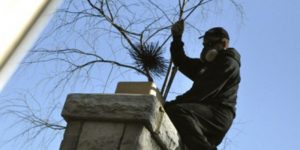
Between 200 and 700 people die each year due to carbon monoxide poisoning, with hundreds more hospitalized. This can be prevented! Have annual cleanings and at least one carbon monoxide detector in your house.
Chimney Caps & Dampers
Having a high quality chimney cap is one of the best things that you can do for the long term life of your chimney. They are so versatile and useful that we recommend that every single chimney flue be covered with a stainless steel or copper chimney cap.
Dailey Maintenance LLC has a wide selection of caps and dampers to match your specific chimney type and style.
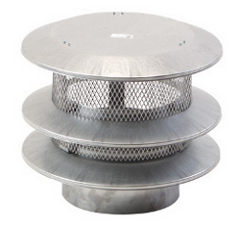
Dailey Maintenance LLC
503-984-7161
info@DaileyMaintenance.com

